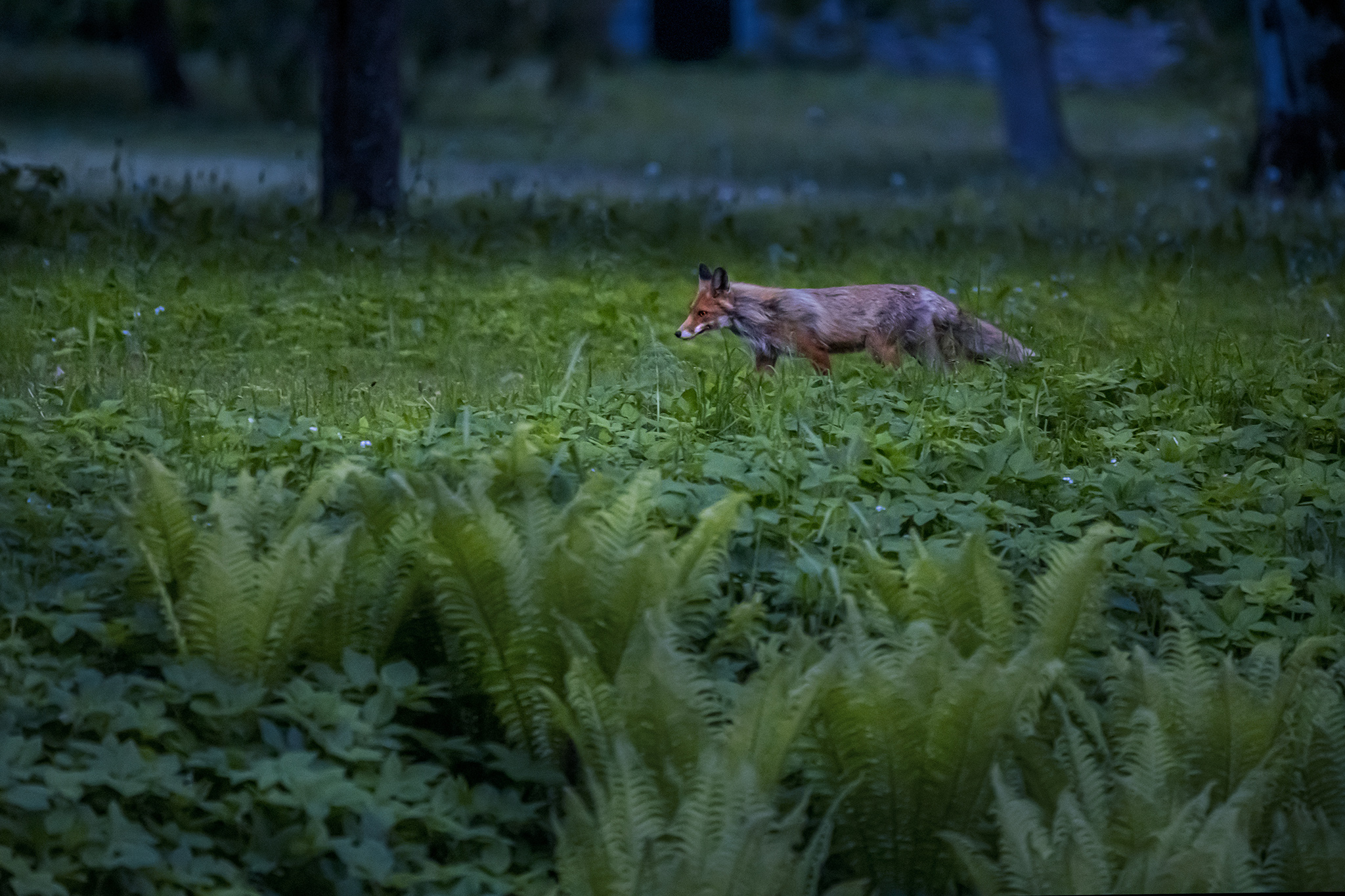Red Fox (Vulpes vulpes)
The Red Fox (Vulpes vulpes) is the most widespread and adaptable fox species in the world, thriving in diverse habitats ranging from urban areas to remote wilderness. Its intelligence, cunning nature, and striking appearance have earned it a prominent place in folklore and wildlife observation.
Physical Description
- Size:
- Body length: 45–90 cm (18–35 inches).
- Tail length: 30–55 cm (12–22 inches).
- Weight: 3–14 kg (6.5–31 lbs), varying by region and subspecies.
- Coloration:
- Typically reddish-orange fur on the back, sides, and head.
- White underbelly, chest, and throat.
- Black markings on the ears, legs, and paws.
- The bushy tail, often called the “brush,” features a white tip in most individuals.
- Eyes:
- Golden or amber-colored with vertically slit pupils, aiding in nocturnal vision.
Behavior
- Diet:
- Omnivorous and opportunistic.
- Diet includes small mammals, birds, insects, fruits, and carrion.
- Will scavenge human food in urban environments.
- Activity:
- Primarily nocturnal but can also be active during the day in undisturbed areas.
- Territoriality:
- Red foxes mark their territories with scent from glands and urine.
- Home ranges vary depending on habitat and food availability, from 5 to 50 square kilometers.
- Social Structure:
- Solitary hunters but may live in small family groups, particularly during the breeding season.
Habitat
- Found across the Northern Hemisphere and introduced to parts of Australia.
- Thrives in a variety of habitats, including:
- Forests, grasslands, tundras, and deserts.
- Urban and suburban areas, where they adapt to human presence.
Life Cycle
- Breeding:
- Mating season varies by location, typically between December and February.
- Gestation:
- Lasts about 49–55 days.
- Litters consist of 4–6 kits on average.
- Young (Kits):
- Born blind and helpless, they open their eyes around 10–14 days old.
- Weaned at 4–6 weeks but stay with the mother for several months.
- Lifespan:
- Wild: 2–5 years (predation and human activity reduce lifespan).
- Captivity: Up to 14 years.
Distribution
The Red Fox is one of the most widely distributed terrestrial carnivores, found across:
- North America, Europe, Asia, and parts of North Africa.
- Introduced to Australia, where it is considered an invasive species.
Conservation Status
- Classified as Least Concern by the IUCN.
- Populations remain stable due to their adaptability, though they face threats like:
- Habitat destruction.
- Hunting and trapping in some areas.
- Disease, including rabies and mange.
Ecological Role
- Predator: Helps control populations of rodents and other small mammals.
- Scavenger: Aids in nutrient cycling by consuming carrion.
- Seed Disperser: Spreads seeds from fruits and berries consumed.
Interesting Facts
- Exceptional Adaptability:
- Red foxes are found in cities like London, Tokyo, and New York, where they thrive alongside humans.
- Fascinating Communication:
- Foxes use a wide range of vocalizations, including barks, screams, and howls, as well as body language to communicate.
- Folklore:
- Red foxes symbolize cunning and trickery in many cultures, appearing prominently in folklore, mythology, and literature.
Summary
The Red Fox (Vulpes vulpes) is a remarkable example of nature’s adaptability. Its intelligence, resourcefulness, and striking appearance make it one of the most recognized and admired animals in the world. Despite challenges, the red fox continues to thrive in an ever-changing landscape, balancing its role as a predator and scavenger in both wild and urban ecosystems.
Views: 1220
Subscribe to the newsletter:
